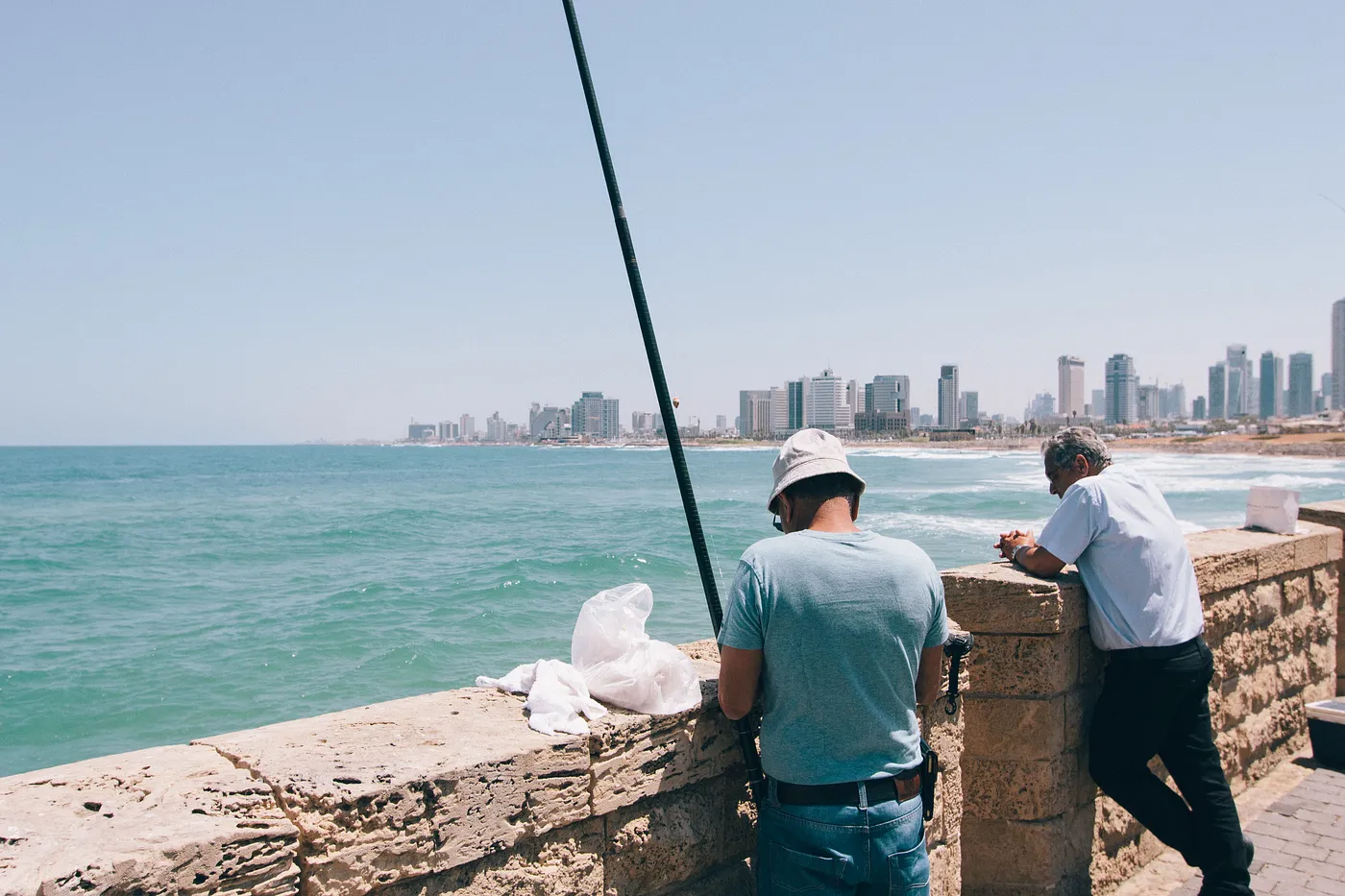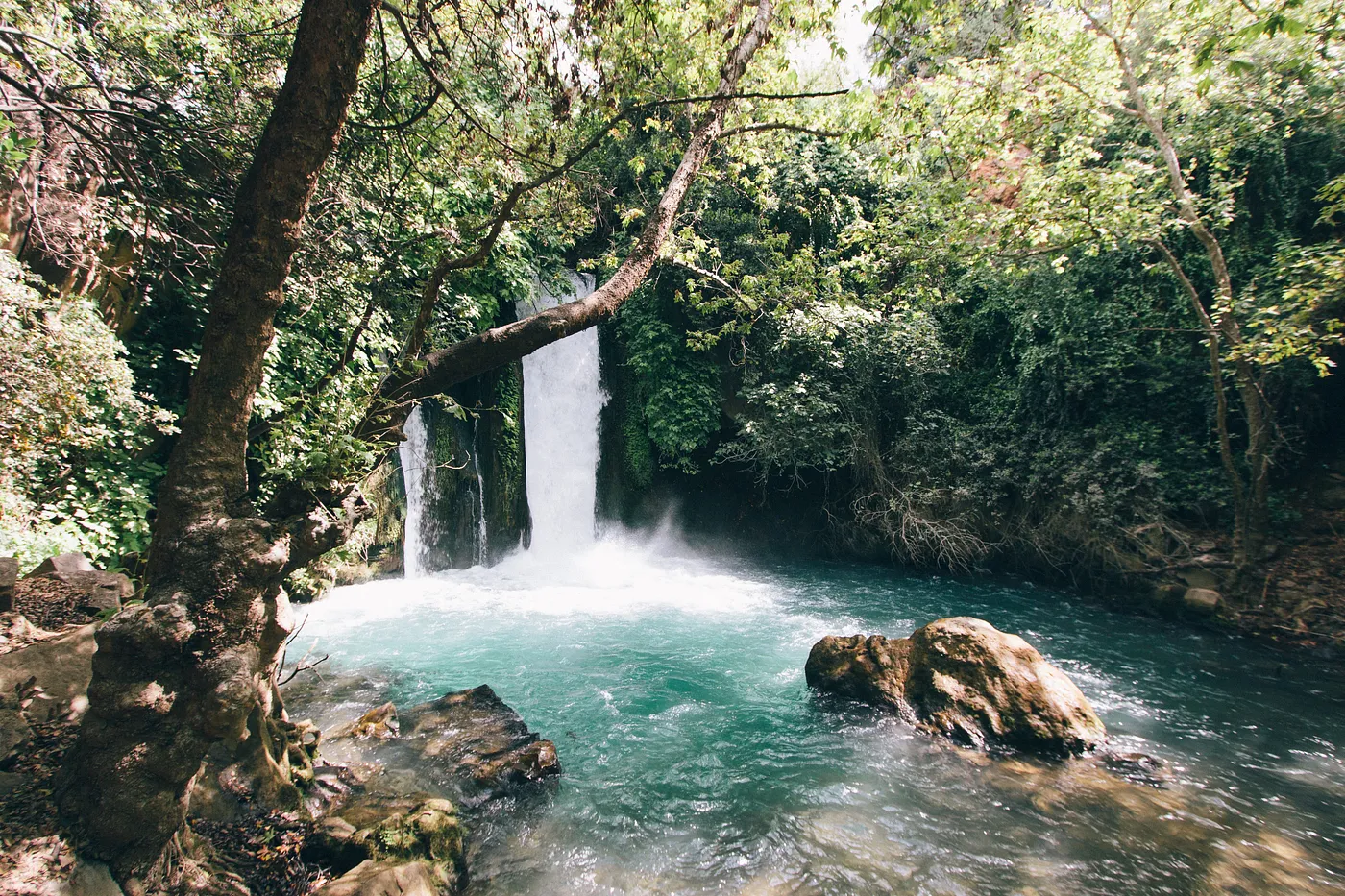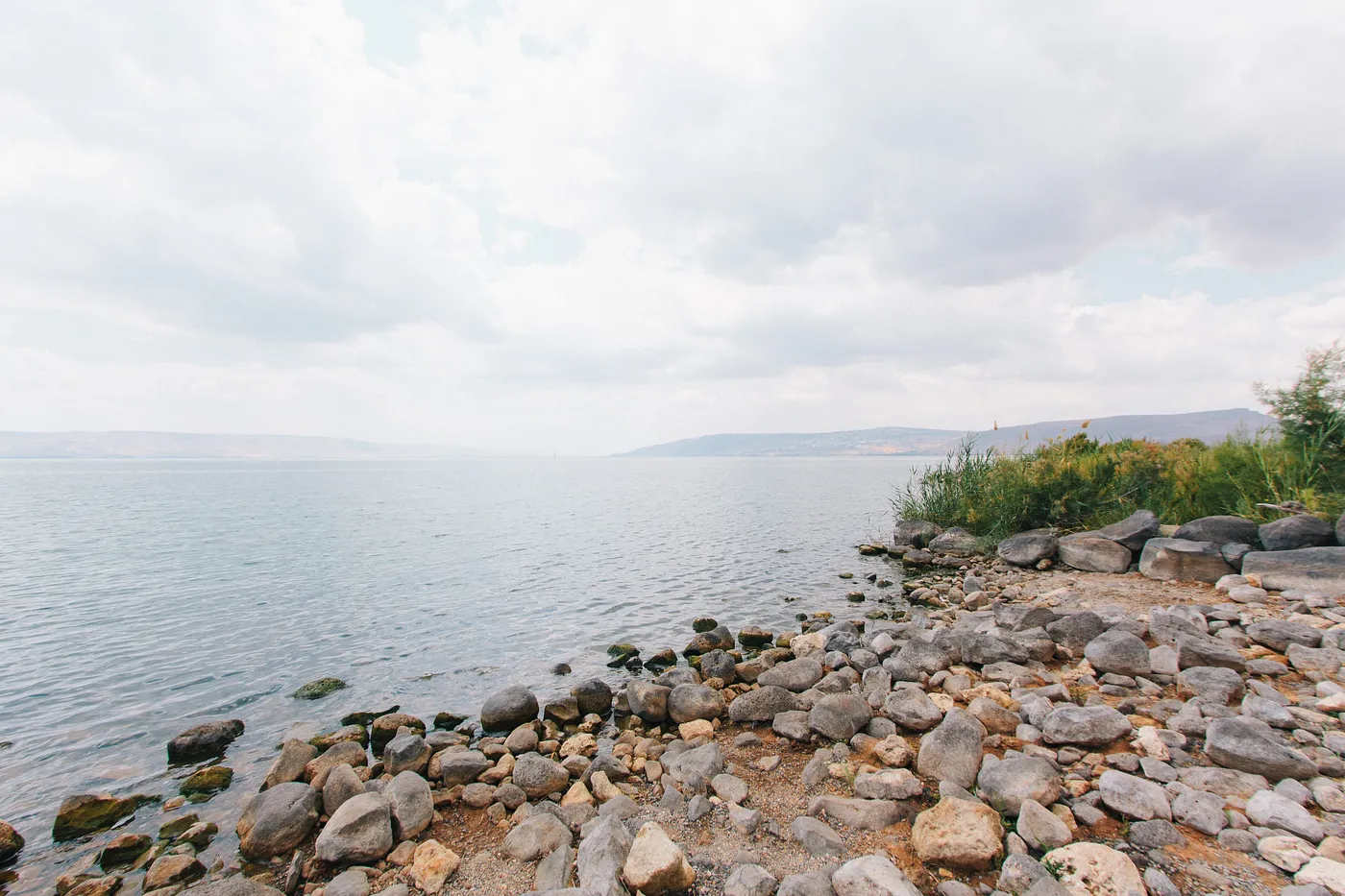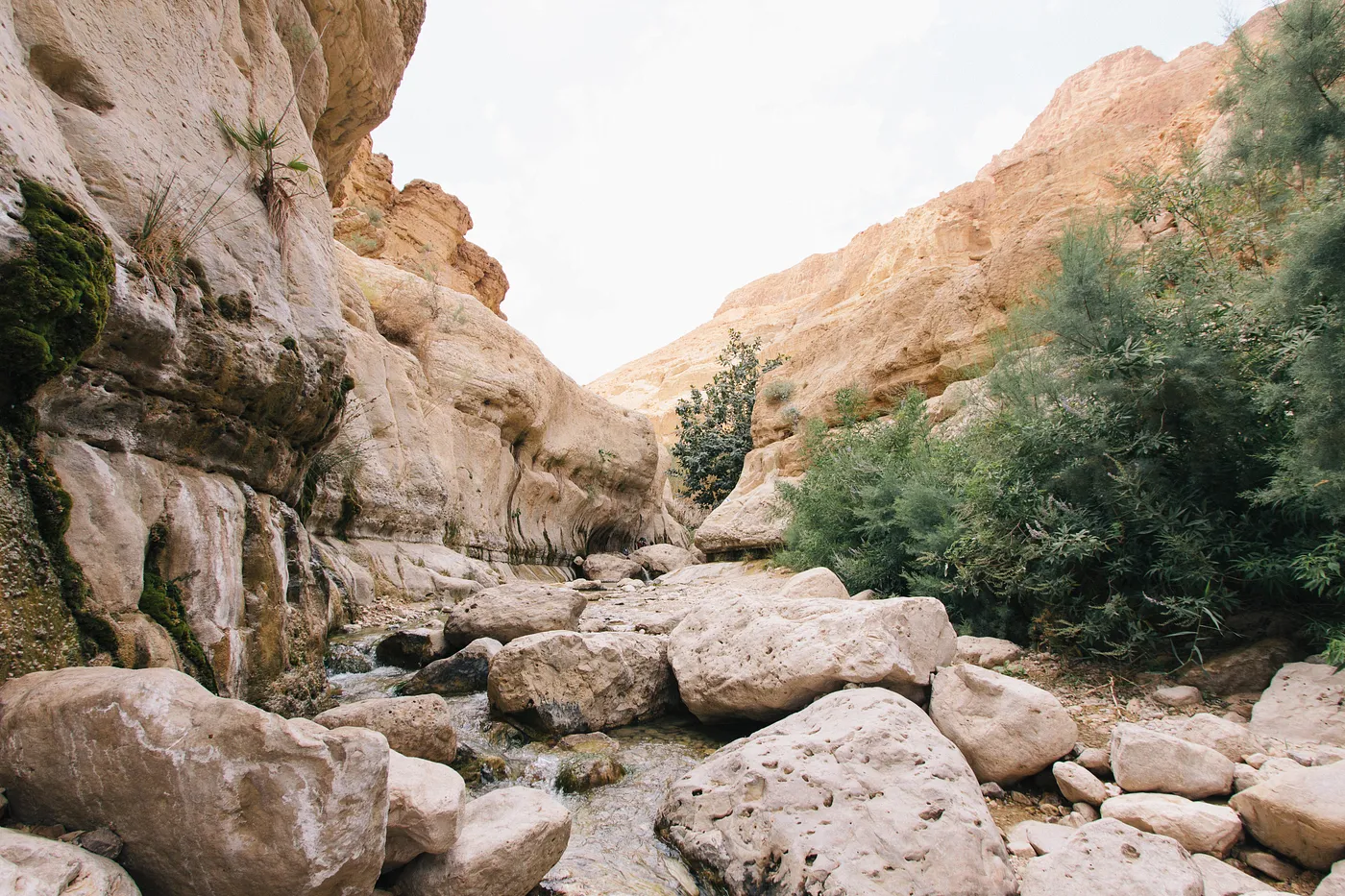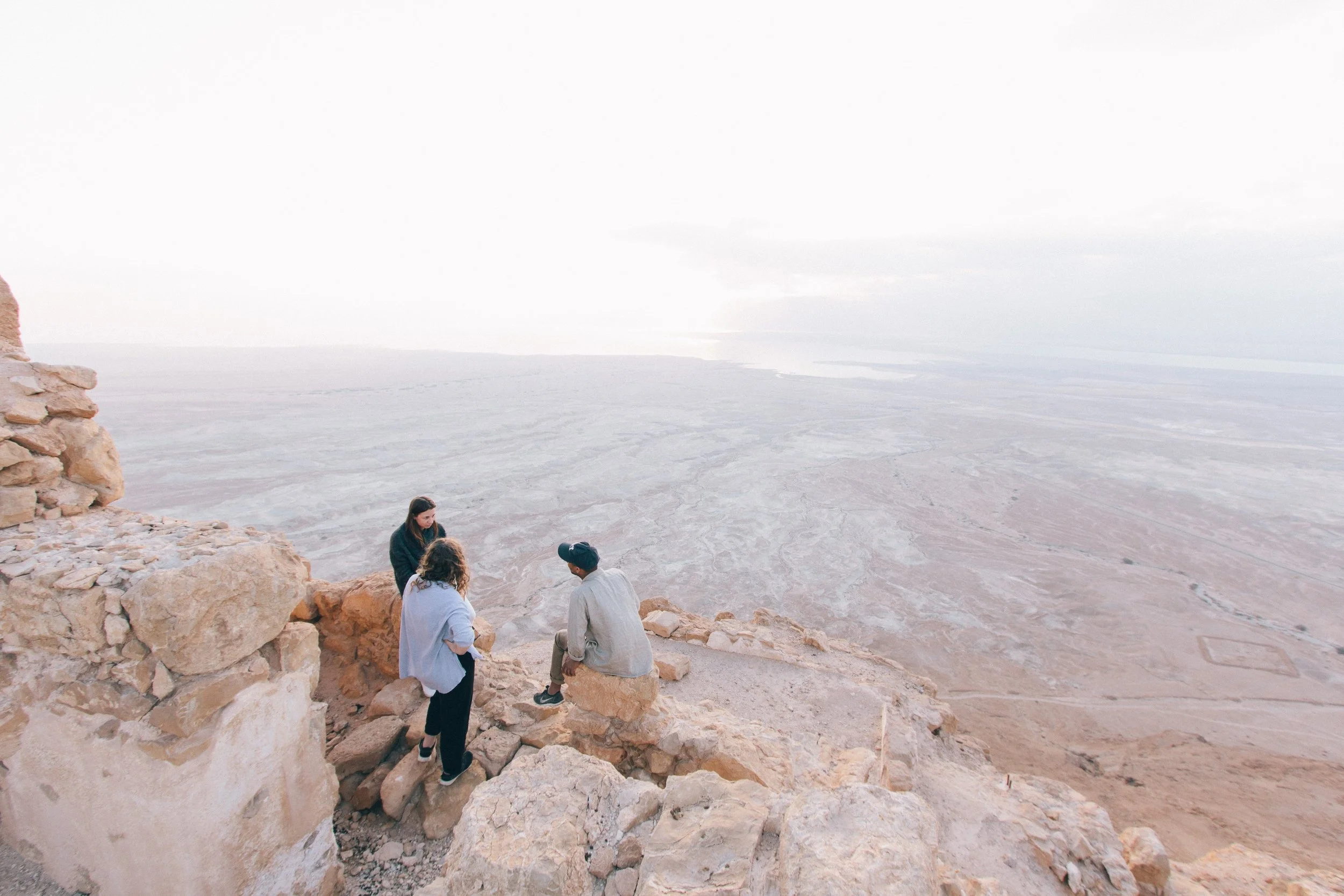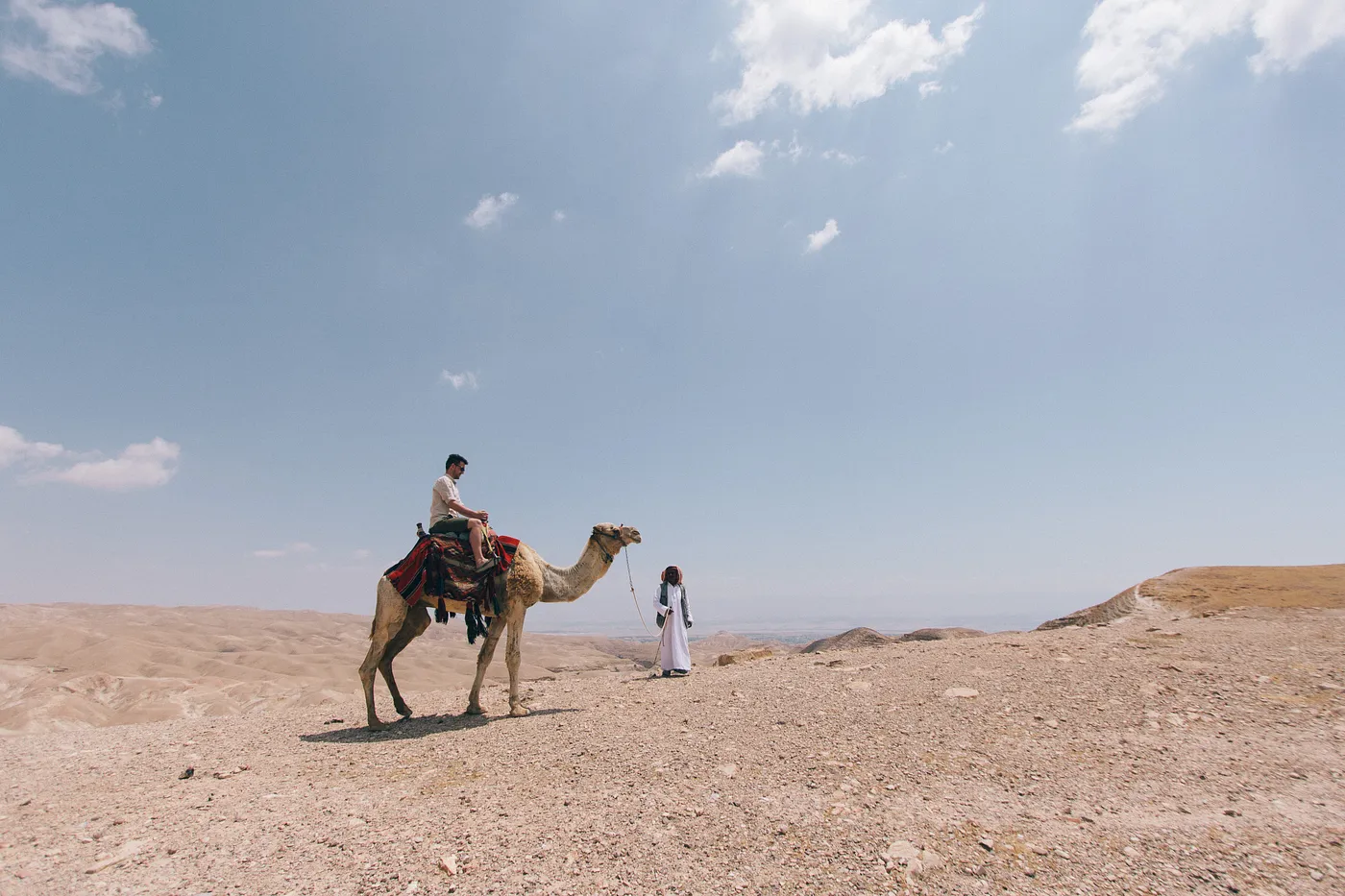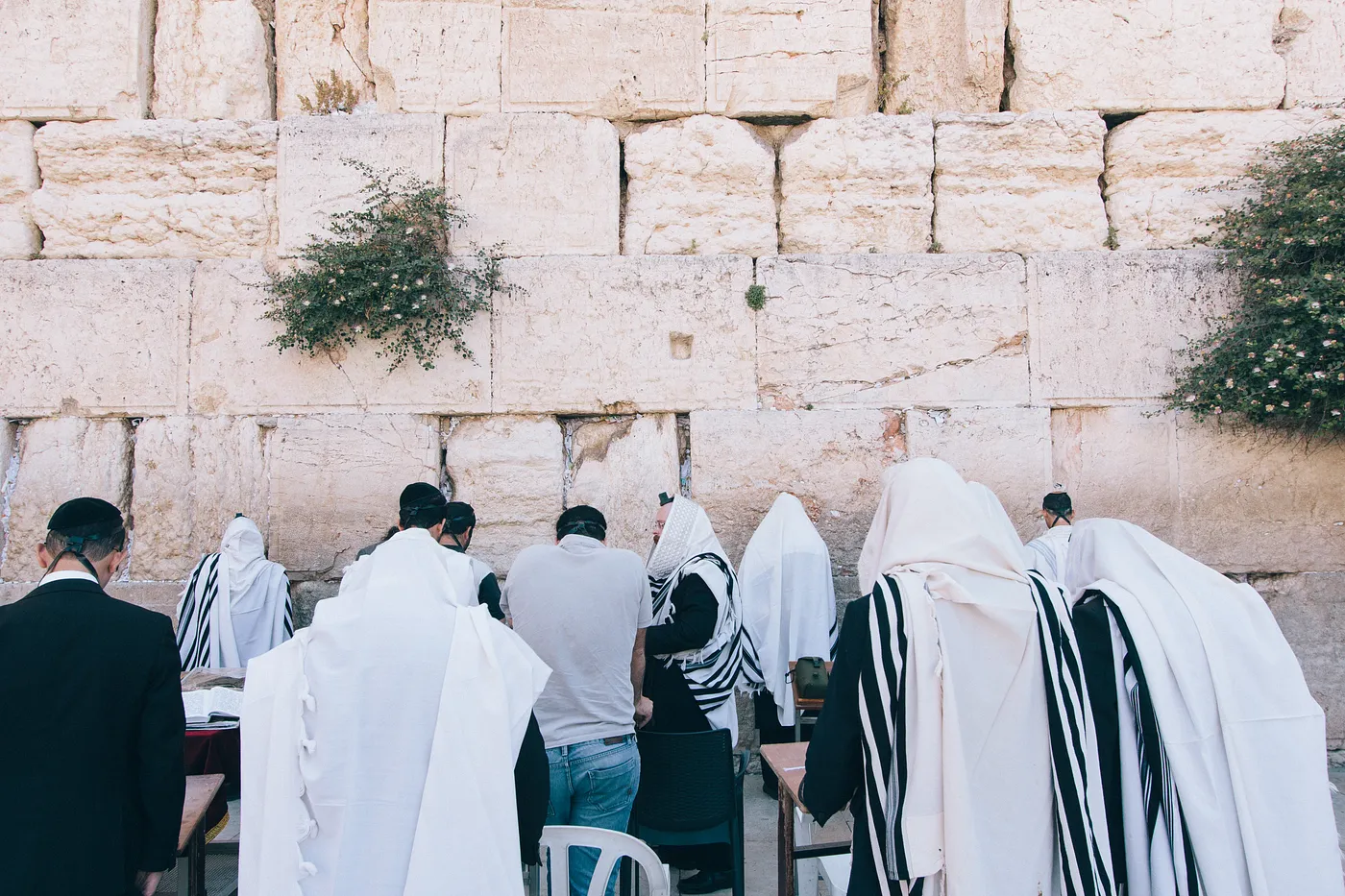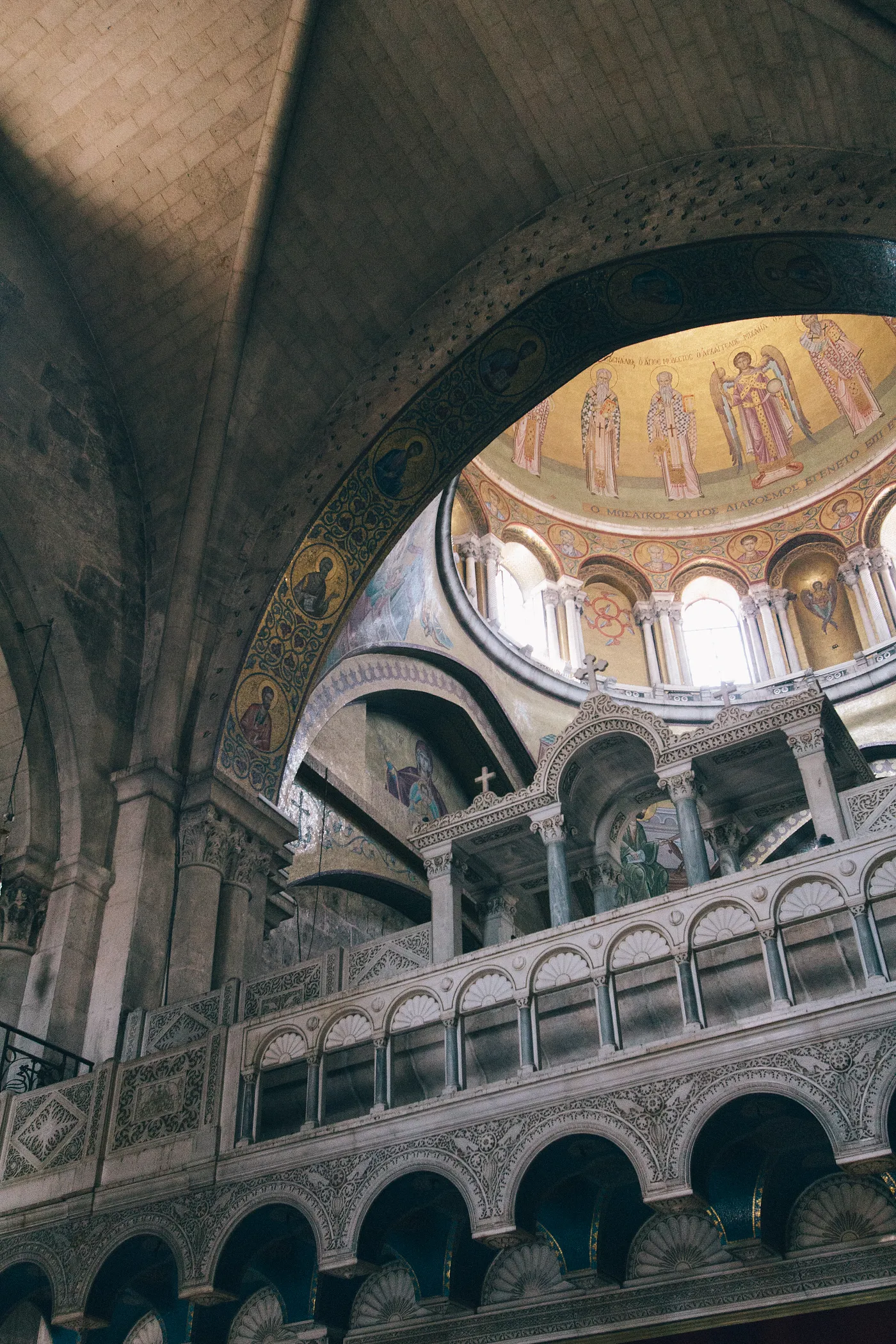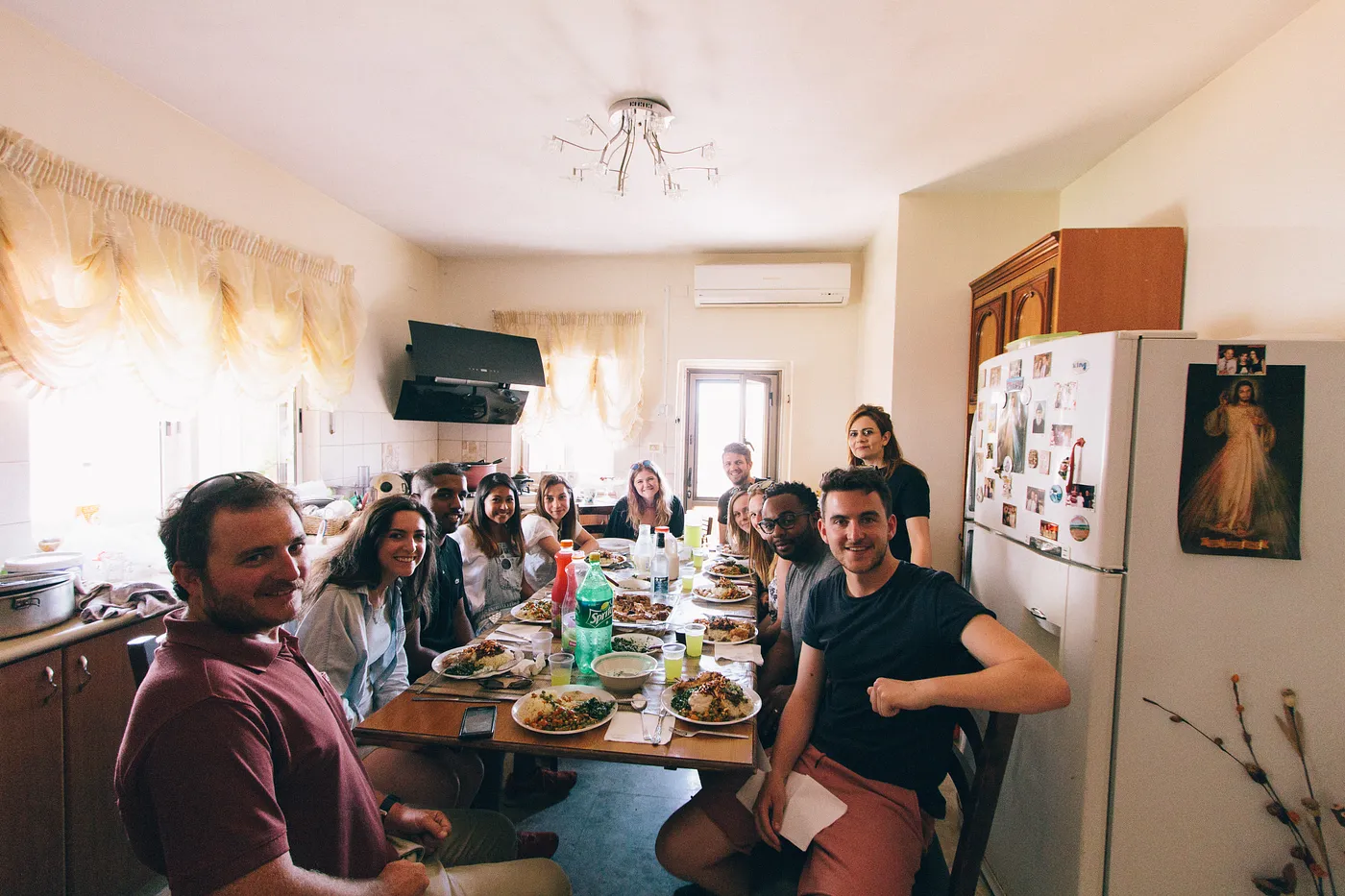A Photo essay of Israel
Visiting Israel was never really an ambition of mine and I never really realised how important the country and its history really is, let alone how it is still relevant in the modern day. To give a bit of background and context, I’m 24, live in London, work in the tech/design industry and have been a Christian since I was 18. Hence why here is going to be a fair amount of focus on faith.
The trip was with 10 other young Christians who live in London. And with none of us having any expectations or previous attachment to Israel or Judaism as a whole, we all got onto the flight with no clue about what the week had in store for us. 7 days later we left with a deeper understanding of the Bible, a realisation of the significance of Israel and a more solid faith.
Day 1
Tel Aviv, Jaffa Port & the tribes of Israel
We spent the first morning wondering around the streets of Tel Aviv, the most modern city in Israel. The most surprising here was how modern and European the city felt overall. Coffee shops were straight of Shoreditch and there was a thriving business district where many startups and tech companies were based. Not exactly the Assassins Creed look and feel I was expecting.
Jonah 1:3
“But Jonah got up and went in the opposite direction to get away from the LORD. He went down to the port of Joppa, where he found a ship leaving for Tarshish.”
We did travel to Jaffa/Joppa the old part of the city, which was a lot more in line with the classic middle eastern style of city I was expecting. The main thing there is the port, which is not only where Jonah sailed from (no whales were sighted sadly), but also where Jaffa oranges were shipped to the UK. Hence why Jaffa Cakes are called Jaffa Cakes.
One of the less surprising aspects of the trip was the strong military presence in the background. But your attention is quickly drawn to awesome views like this. Here was can see the big plains of NW Israel as seen from the top of Mount Carmel. The mountain where Elijah called down fire from Heaven.
1 Kings 18
“I have made no trouble for Israel,” Elijah replied. “You and your family are the troublemakers, for you have refused to obey the commands of the lord and have worshiped the images of Baal instead. Now summon all Israel to join me at Mount Carmel, along with the 450 prophets of Baal and the 400 prophets of Asherah who are supported by Jezebel.”
Day 2
Caesarea Philippi & the Israel, Syria border
One thing I did not even remotely expect was the sheer beauty of Israel. Heading up to the NW tip of Israel to the Golan Heights meant we started to see everything from huge sprawling plains and incredible waterfalls like above. We followed the Jordan River from it’s start, past some ancient mills, before ending at the ruins Caesarea Philippi. A once great city, that now is now nothing more than a collection of ruins.
Matthew 16:13
“When Jesus came to the region of Caesarea Philippi, he asked his disciples, “Who do people say that the Son of Man is?” “Well,” they replied, “some say John the Baptist, some say Elijah, and others say Jeremiah or one of the other prophets.” Then he asked them, “But who do you say I am?” Simon Peter answered, “You are the Messiah,the Son of the living God.”
This place used to be pretty crazy with a huge amount of spiritual rituals, prostitutes, drunkedness and beastiality all happening in the name of the Greek God Pan. The half goat, half man, God of nature, panic and fertility. Pretty interesting that this was the first place Jesus was recognised as God.
We then moved on to the edges of Israel, past the 1949 Armistice Line, into the DMZ and finally right up to the 1974 ceasfire lines between Israel and Syria. If you don’t know much about the political history of Israel, it’s worth looking into when it was declared an independent State in 1948, the Arab-Israeli war in 1949 and the 6 day war in 1974. The UN still have a presence in the area, maintaining the DMZ and observing Syria from a distance. The outposts on the other side of the border have been abandoned since a number of UN Peacekeepers were captured in 2014.
Being able to walk around these areas and seeing active conflict zones from only a few miles away was a huge wakeup call to the super safe, privileged lives we live in the UK
Day 3
Galilee and the ministry of Jesus
One of the main reasons of visiting Israel is to see where Jesus lived, giving more context and evidence to the Bible. This is the road from the Mount of the Beatitudes down to Capernaum where Jesus lived during his ministry around the Sea of Galilee. It’s nuts to think that he walked along this Roman road 2000 years ago.
Matt 5:2 & Luke 6:19
“When Jesus had finished saying all this to the people, he returned to Capernaum. Large crowds followed Jesus as he came down the mountainside. Suddenly, a man with leprosy approached him and knelt before him. “Lord,” the man said, “if you are willing, you can heal me and make me clean.” Jesus reached out and touched him. “I am willing,” he said. “Be healed!” And instantly the leprosy disappeared.”
This is the beach on the Sea of Galilee where Jesus appeared to his disciples after the resurrection. Again, it’s incredible to see where these things actually happened (often you can’t be 100% sure, but if it’s not the same place, it would of looked very similar)
We also visited the ruins of Capernaum, the town in which Jesus lived during the main years of his ministry. It’s repeatedly mentioned in the Bible and Jesus often taught in the Temple there, so it was surprising to find out that only 1500 people lived there. Sadly Peter’s house (where Jesus lived) is now underneath a massive church and the idea of “let’s build a huge church on top of an interesting place so you cant see the original building any more” tends to happen at any biblical site. Thankfully the Temple where Jesus used to preach is relatively untouched, and the cat above is sleeping on the very walls of that Temple.
‘Jesus and his companions went to the town of Capernaum. When the Sabbath day came, he went into the synagogue and began to teach.’ — Mark 1:21
Day 4
Jesus’s baptism, The Valley of Death and The Dead Sea
Things started to get pretty impressive as we moved south into the deserts of Israel, hiking into the valleys where David fled from Saul.
It’s easy to see the imagery behind many of David’s Psalms considering he spent a huge portion of his life in this area.
Psalm 23:4
“Even when I walk through valley of death, I will not be afraid, for you are close beside me. Your rod and your staff protect and comfort me.”
We also visited the spot on the Jordan River where Jesus got baptised. Not exactly the huge river I pictured, but 2000 years ago it was much cleaner, and much, much wider!
“Then Jesus went from Galilee to the Jordan River to be baptised by John.” — Matt 3:13
Of course we also visited the dead sea, which is exactly what it looks like. A weird experience of floating in what feels like thick, almost oily water.
Day 5
The desert, King Herod and Jerusalem
Day 5 was an incredibly inspiring day. We woke up at 4am to travel to a ruin of Herods main fortress in the middle east and the view was absolutely outrageous! Masada was built around 50BC and was a stronghold for around 100 years until the Romans overthrew it after a siege lasting over a year, resulting in a mass suicide and bloodbath! You can see the ruins of a Roman camp in the right of the above photo.
Seriously, the sunrise was absolutely incredible! And the ruins looked like something straight out of a Lawrence of Arabia or Game of Thrones set.
After watching the sunrise, we returned to the Beduin tent where we spent the previous night. And there we had an incredible breakfast with the best possible view you could ever have of the desert.
We then started our route towards our final destination, Jerusalem. This meant travelling along the main pass between Jericho, Bethany and Jerusalem. A route used by travellers for thousands of years and the route Jesus used as imagery in the parable of the good Samaritan.
Luke 10:30
“Jesus replied with a story: “A Jewish man was traveling from Jerusalem down to Jericho, and he was attacked by bandits. They stripped him of his clothes, beat him up, and left him half dead beside the road.”
The first view we had of Jerusalem was from the top of the Mount of Olives, with the sprawling Old City and the Temple Mount taking center stage before us. This moment was extremely memorable as within a few minutes of being there, we heard the Muslim call to prayer broadcast over the entire city. A strong reminder of how much religious conflict is in this city and why Jesus wept when he saw the city for the first time.
Luke 19
“But as Jesus came closer to Jerusalem and saw the city ahead, he began to weep. “How I wish today that you of all people would understand the way to peace. But now it is too late, and peace is hidden from your eyes.”
The Garden of Gethsemane was also an incredibly powerful experience, mainly as it is 100% in the same location where Jesus prayed 2000 years ago. And the fact that it has been kept in a similar style to the biblical account with olive trees and shrubs.
“Then Jesus went with them to the olive grove called Gethsemane, and he said, “Sit here while I go over there to pray.” —Matt 26
The church at the garden is kept incredibly dark and almost morbid, creating an environment for deep reflection and prayer.
Day 6
The Old City & the death of Jesus
“Every day Jesus went to the Temple to teach, and each evening he returned to spend the night on the Mount of Olives. The crowds gathered at the Temple early each morning to hear him.”
Luke 21: 37-38
The Dome of The Rock sits right in the center of The Temple Mount where the First and Second Temples used to stand. No non-Muslim can enter this place as it is a shrine where they believe the miraculous Night Journey of Prophet Muhammad ended. This was the journey the followers of Islam believe he took from Mecca to Jerusalem on a Buraq.
The Temple Mount is also where Jesus spent a huge amount of time, teaching people every day he was in the city.
We also visited the Western Wall. The well-known external part of the Temple Mount where Jews are nearly always seen praying. They value this as a Holy Site due to its proximity to the Holy of Holies of the original Temples, and therefore the closest point they can get to God. Seeing this intense level of ritualistic religion made me realize why the power of the resurrection is so freeing. Walking around the rest of the Old City is a never-ending experience of history and incredible ancient architecture.
Often the city looked like something out of Assassins Creed or Game of Thrones, making it very easy to photograph!
The Church of the Holy Sepulchre is a huge and extravagant church built on the supposed location of Jesus’ death and resurrection. These have become massive tourist hot spots and the level of gold has made it feel more like a shrine than a place of reflection and prayer. Even though it is likely to be in the right place, it is very hard to have any spiritual experience here as most people seem more focussed on kissing artefacts than praying. The architecture is pretty incredible, especially when you look above the mass of visitors.
“Joseph took the body and wrapped it in a long sheet of clean linen cloth. He placed it in his own new tomb, which had been carved out of the rock. Then he rolled a great stone across the entrance and left.”
Matthew 27:59-66
We also visited the Garden Tomb, an alternative potential location of Jesus’ death and resurrection. Thankfully this has been kept a place of quiet reflection, allowing you to focus on the importance of the event and the fact that Jesus is risen and no longer in the tomb. Meaning it really doesn’t matter which one is in the right place.
Day 7
The West Bank
Bethlehem is located in the West Bank on the other side of the Israel-Palastine border. And getting there meant crossing the vast wall through a military checkpoint. After spending the previous day thinking about Jerusalem 2000 years ago, it was a bit of a wake up call to the modern day difficulties the city and country face.
We had lunch in a Palestinian home where we heard stories of shootings, bombings but also peace and friendship. It is clear that a huge number of people on both sides simple want peace and reconciliation, no matter what you hear in the media.
I believe that everyone, with or without faith, should visit Israel at some point in their life. It allows you to gain context of what happened in the Bible, see the history of a controversial country in person, walk where Jesus walked, see the things he saw, start to realise the importance of Israel, and crucially to understand the power of faith.
It is also a beautiful country and is well worth a visit purely for that. And with Jerusalem being a slightly segregated melting pot of different cultures and religion, it really is like seeing the whole world crammed into one tiny city.
If you have been before, it would be awesome to hear your thoughts.


